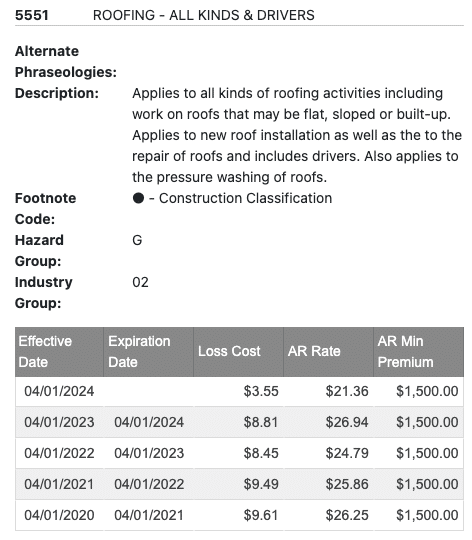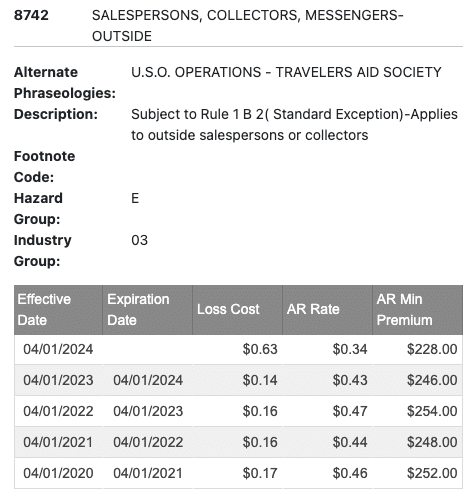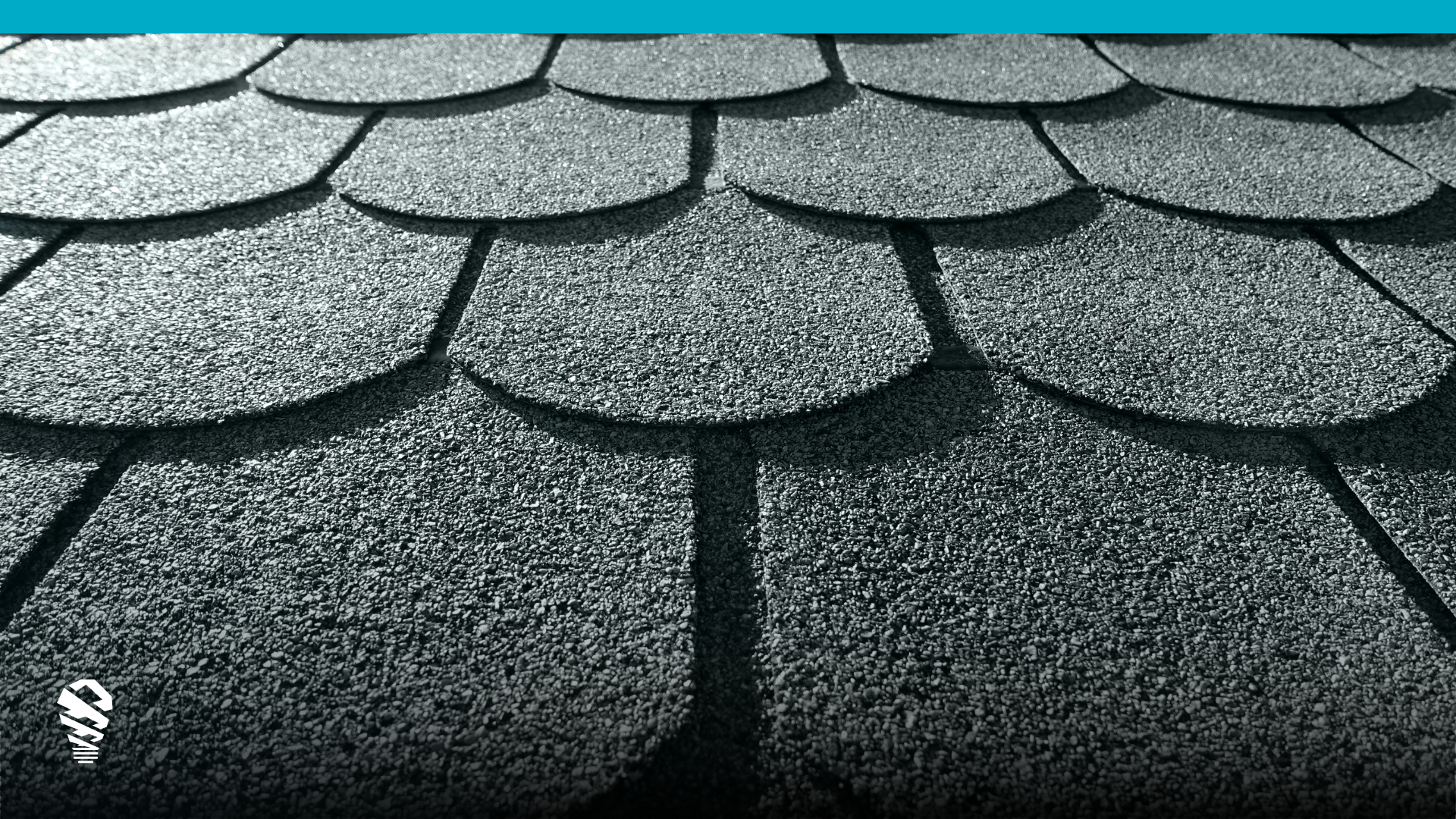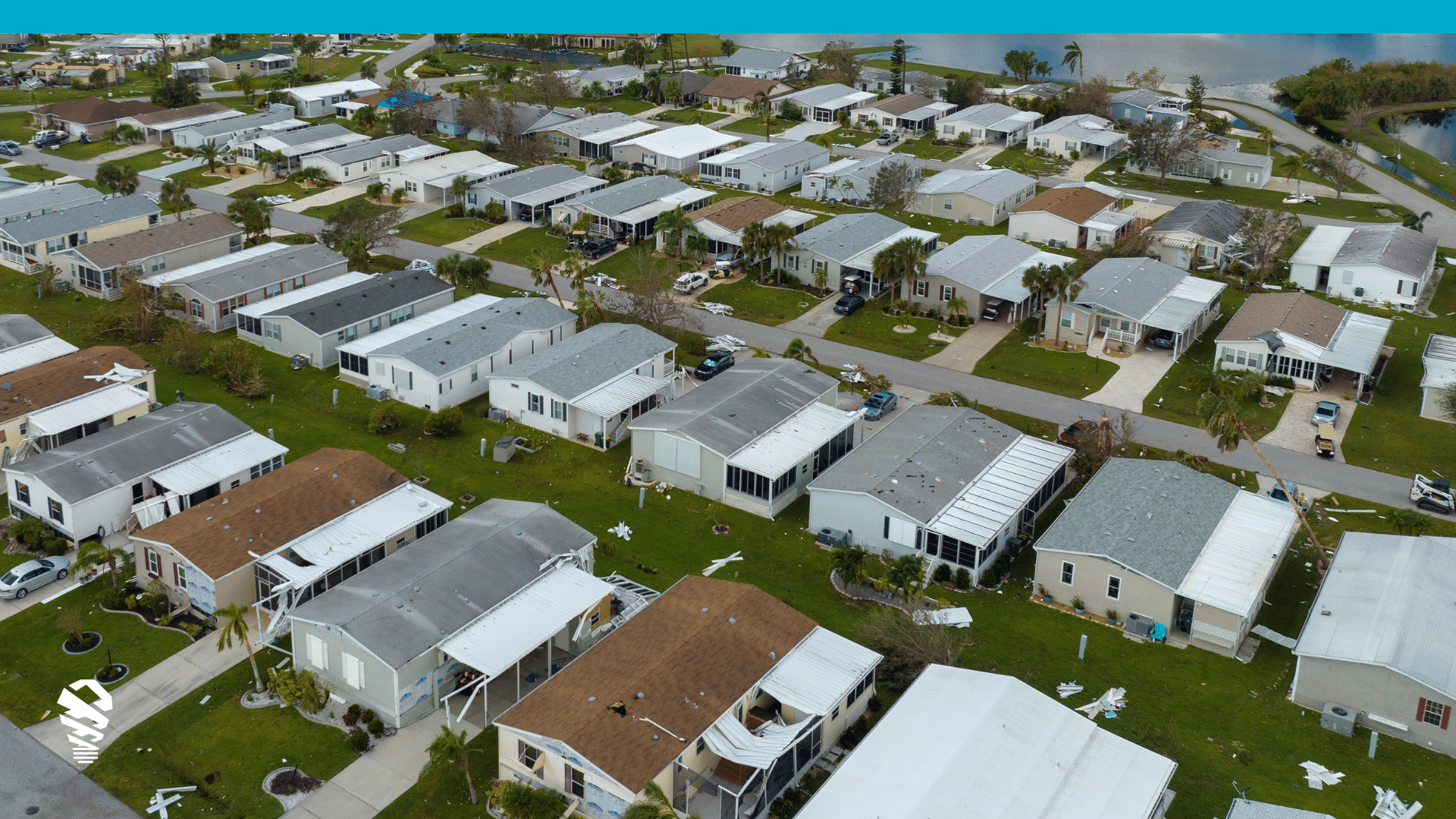Just as they have done for many industries worldwide, drones for roofing have changed the name of the game. For an industry that has historically depended on analog processes and physical labor, drones have ushered in the digital age, saving companies time and money in the process. The return on investment of using drones for roofing is both obvious and substantial; from increasing the efficiency of bid creation, to improving the accuracy and depth of their data. They have also enabled improvement in close rates, quality, and reputation, without putting workers lives at risk. However, keeping people off of roofs is not only worthwhile for employees. You may not realize just how much ROI you are getting by keeping estimators off of roofs. In some cases roofers can save thousands of dollars a year!
It all comes down to workers comp, classification codes, and modification rates. To understand how you might be able to save money, let’s do a quick recap of what each term means.
Classification codes: Classification codes are four-digit codes created by the National Council on Compensation Insurance (NCCI), and used to classify businesses for workers’ compensation insurance. Each code also has its own rate for calculating premiums, and the rates tend to be lower if there is less chance for work-related injury. The important thing to remember is that Roofing is classified as NCCI code 5551, and Sales is 8742.
Experience Modification Rate (EMR): The experience modification rate is a number that can strongly impact a business, as it is used by insurance companies to gauge the past cost of injuries and any future possibility of risk. The EMR will either increase or decrease your premium depending on whether or not you’ve had previous injuries, are new to the work, or have gone accident-free for a certain amount of time. Basically, the lower your EMR, the lower your worker compensation insurance premiums will be.
Classification code, the company’s experience modification rate, and the state you work in are all combined to determine how much money your company pays per $100 of salary for the employee.
Understanding Workers’ Comp Savings
When it comes to the actual savings, it’s a matter of changing your classification code. If you can keep estimators on the ground by using a drone solution for estimating, you can change your classification from roofing (NCCI code 5551) to sales (NCCI code 8742). As you might imagine, a sales job carries substantially less risk than a roofing job, and as such, requires much lower premiums.
Let’s look at an example based on real-world data*.
Say I run a roofing company in North Carolina and this is my current situation:


*Source: North Carolina Rate Bureau
- Our estimators are currently in the roofing classification code, which means I would pay a rate of $21.36 for every $100 of payroll that my employee receives.
- We haven’t had any major accidents, so our EMR is 1.00.
- For ease of calculation, I pay my estimators a salary of $50K a year.
Here’s how my premium is calculated:
$21.36 (5551 roofing class code) * .100 (my EMR) * $500 (payroll per $100 at $50K) = over $10,000 in premiums per year!

In total, I pay $50K for my worker’s salary PLUS a whopping $10K for worker’s comp insurance.
Now, by utilizing a sophisticated drone platform, taking those employees off the roofs, and allowing them to focus on securing leads drastically changes the results of premiums paid. Without needing to climb onto a roof, my roofing estimator’s classification code could be changed to sales, resulting in an approximate 99% decrease in cost!
Here’s how you would calculate a premium for a salesperson:
$0.34 (8742 outside sales class code) * 1.00 (my EMR) * $500 (payroll per $100) = $170 per year
While every state has different rates, the sales classification code is nearly always less expensive than the roofing code since sales jobs involve less risk of injury. For comparison’s sake, the New Jersey roofing classification code demands businesses with good/average EMR pay $26.34 for every $100 of payroll, whereas the sales classification code necessitates only $0.38. If I paid a roofing estimator a $50K salary in New Jersey but changed their classification code to sales by keeping them off the roof, I would be paying $190 in annual premiums rather than $13,170 in workers comp at a 98.6% decrease.
Conclusion
These equations may seem complex, but the only equation you need to know is this: drone platform + keeping people off of roofs + changed classification code = significant savings. Not to mention the reduced risk of future injuries, which will lower your modification rate if you have had injuries in the past. The numbers here speak for themselves. Using drones for roofing not only means elevating the quantity and quality of your company’s work, but it also means alleviating risk and saving thousands of dollars, if not more.
*Data is based on actual insurance cost quotes from January 2024.

![Save 99% on Worker's Comp Premiums by Using Drones [Updated January, 2024]](https://www.lovelandinnovations.com/wp-content/uploads/2024/01/Save-99-on-Workers-Comp-Premiums-by-Using-Drones-1024x576.png)

![How to Measure a Roof With a Drone [Updated April 2023]](https://www.lovelandinnovations.com/wp-content/uploads/2024/04/How-to-Measure-a-Roof-With-a-Drone-Updated-April-2023.png)




